Table of Contents
Toggleclass 10 maths 1.1 solutions
NCERT Solutions For Class 10 Maths Chapter 1 Real Numbers Ex 1.1
Download the free NCERT Maths Chapter 1 Solutions for Class 10 here. Real Numbers in Maths Class 10 NCERT Solutions are a great resource for homework assistance. Ex 1.1 Maths Class 10 Chapter 1 Expert Bhautikstudy.com Teachers developed the NCERT Solutions. Complete solutions to all the problems in NCERT Textbook’s Chapter 1 Math Class 10 Real Numbers Exercise 1.1.
Class 10 Maths 1.1 Solutions Question 1.
1. Express each number as a product of its prime factors:
(i) 140
(ii) 156
(iii) 3825
(iv) 5005
(v) 7429
Solution:

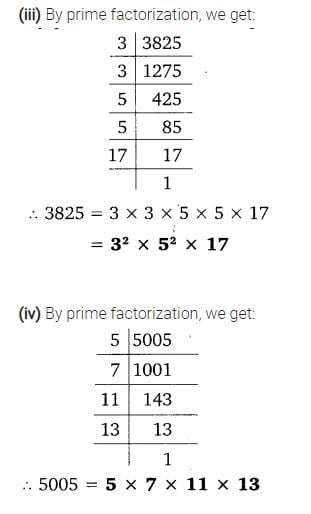

Class 10 Maths 1.1 Solutions Question 2.
2. Find the LCM and HCF of the following pairs of integers and verify that LCM × HCF = product of the two numbers.
(i) 26 and 91
(ii) 510 and 92
(iii) 336 and 54
Solution:

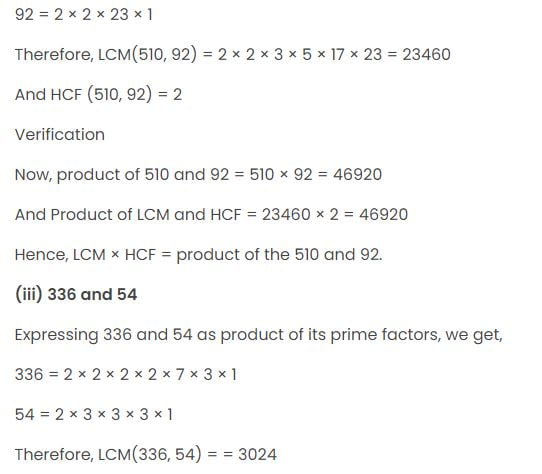
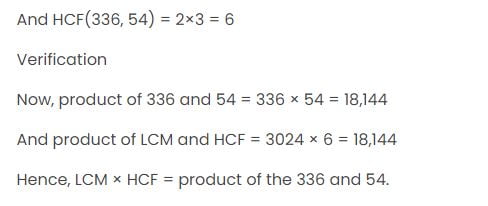
Class 10 Maths 1.1 Solutions Question 3.
3. Find the LCM and HCF of the following integers by applying the prime factorisation method.
(i) 12, 15 and 21
(ii) 17, 23 and 29
(iii) 8, 9 and 25
Solutions:
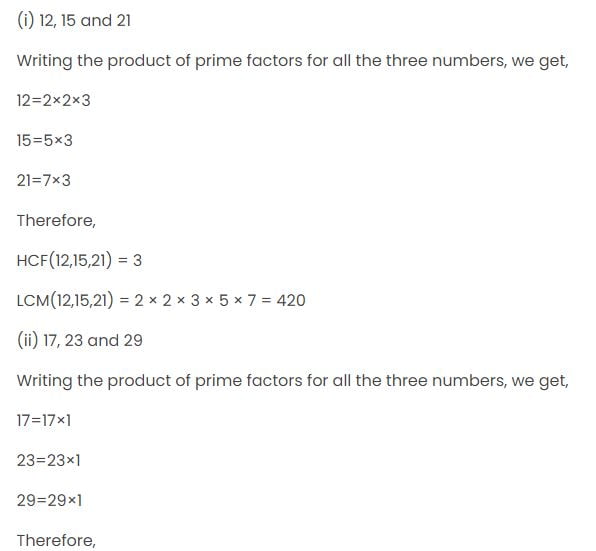
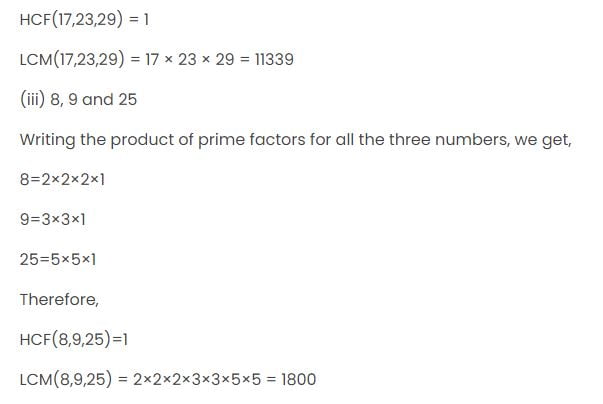
Class 10 Maths 1.1 Solutions Question 4.
4. Given that HCF (306, 657) = 9, find LCM (306, 657).
Solution:
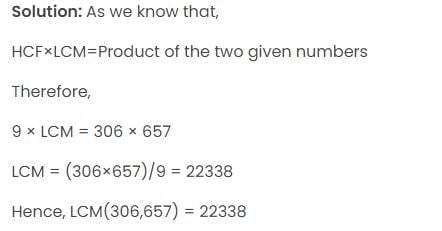
Class 10 Maths 1.2 Solutions Question 5.
5. Check whether 6n can end with the digit 0 for any natural number n.
Solution:

Class 10 Maths 1.1 Solutions Question 6.
6. Explain why 7 × 11 × 13 + 13 and 7 × 6 × 5 × 4 × 3 × 2 × 1 + 5 are composite numbers.
Solution:

Class 10 Maths 1.1 Solutions Question 7.
7. There is a circular path around a sports field. Sonia takes 18 minutes to drive one round of the field, while Ravi takes 12 minutes for the same. Suppose they both start at the same point and at the same time, and go in the same direction. After how many minutes will they meet again at the starting point?
Solution:

Maths in Class 10: Real Numbers
The set of real numbers is made up of both rational and irrational numbers. R represents the set of real numbers. As a result, each real number can be either rational or irrational. It has a non-terminating decimal representation in both scenarios. When a number is rational, its decimal representation repeats, even when zeroes repeat. When a number is irrational, its decimal representation is non-repeating. We can state that every point on the number line “l” corresponds to a real number, whether it be rational or irrational, or that there is a unique point on the line “l” for every real number.
We can infer from the reasoning above that: There is a unique point on the number line that corresponds to every real number, and vice versa, there is a real number that corresponds to every point on the number line. The number line is referred to as the “real number line” because, as we can see, there is a one-to-one relationship between the real numbers and the points on number line “l.”
Class 9 introduces real numbers, while Class 10 goes into additional detail on this topic. Chapter 1 of the Class 10 Maths 1.1 Solutions The answers to the queries in this chapter can be found in Real Numbers. Real numbers and their uses are covered in this chapter. Any positive integer a can be divided by another positive integer b such that the remainder is less than b, according to the divisibility of integers using Euclid’s division algorithm. The Fundamental Theorem of Arithmetic, on the other hand, deals with the multiplication of positive integers.
Important Aspects of Class 10 Maths 1.1 Solutions Chapter 1: Real Numbers
With the aid of these NCERT Solutions, you may complete the Class 10 CBSE curriculum revision for 2024–2025.
You can get higher grades by following the step-by-step instructions provided by our subject matter experts in the solutions.
It adheres to NCERT norms, which aid in the pupils’ competent preparation.
It includes every significant query from the perspective of the examination.